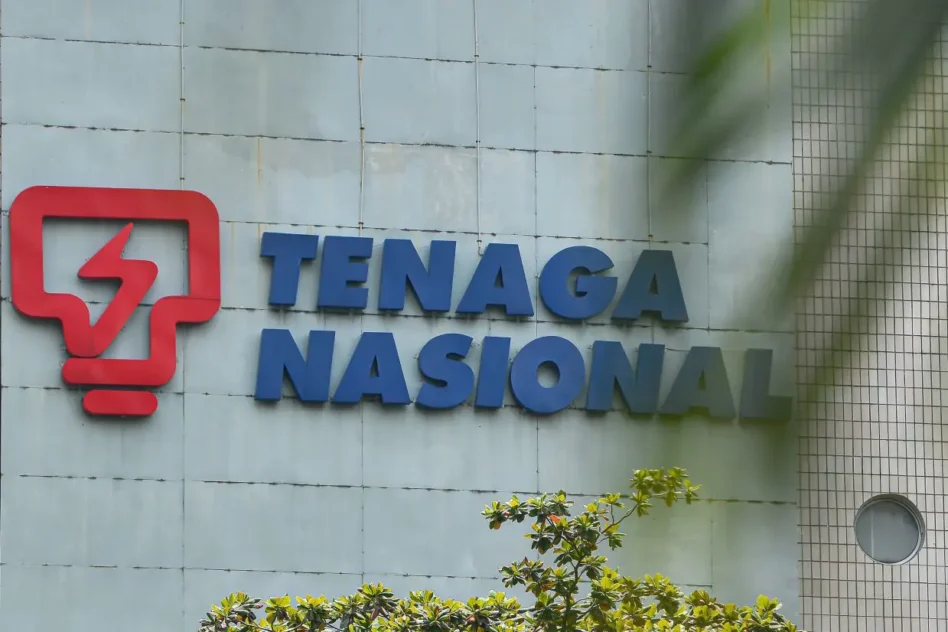THE rubber, pepper and cocoa industry in Malaysia is not isolated from the effects of the COVID-19 pandemic which triggered not only supply problems, but also demand, coupled with the labour shortage plaguing the agricultural sector.
In order to stabilise agri-commodity prices in the face of continuing economic challenges, the government implemented several measures including exploring new markets through promotional activities and matching new markets with local manufacturers and buyers from abroad.
Among the government incentives to assist the rubber sector is through the RRIMniaga Application which can be used by licensees to record rubber transactions to expedite the Rubber Production Incentive application process from the Malaysian Rubber Board (MRB).
Apart from that, the government also implemented the pricing mechanism at the farm by providing an allocation of RM6.4 mil as working capital to the cooperatives for the purpose of rubber transactions.
This mechanism can reduce the layer of buyers and offer a cuplump price at an average of 10 sen to 20 sen per kilogramme (kg) higher than other rubber buyers.
The incentive for the pepper sector is to provide Smallholders Agricultural Input Assistance under the Pre-Prihatin 2020 Economic Stimulus Package amounting to RM3,000 for one hectare given on a one-off basis by issuing vouchers.
Rubber industry performance less encouraging
Even though the rubber market’s performance this year is less encouraging and has faced various challenges such as worker problems due to travel restrictions imposed to curb the spread of the COVID-19 pandemic, total exports of natural rubber (NR) and rubber products for the January to September 2020 period increased to RM38.4 bil compared with RM29.73 bil for the same period last year.
For rubber commodity, this year saw an increase in exports to RM25.88 bil from RM17.25 bil in the same period last year, contributed by exports of rubber products.
However, NR exports declined to RM4.46 bil from RM4.52 bil, followed by other rubber products (RM1.0 bil versus RM1.12 bil) and hevea wood products (RM6.70 bil versus RM6.85 bil).
The data from the Malaysian Rubber Board (MRB) is supported by the report of the Department of Statistics Malaysia (DOSM) in the monthly rubber statistics which showed that the production of NR increased by 3.7% in September 2020 to 46,187 tonnes from 44,543 tonnes in the previous month.
According to the DOSM, China remains the main destination for NR exports accounting for 46 % of total exports in September 2020, followed by Germany (13.2%), Iran (3.8%), Finland (3.3%) and Brazil (3.1%).
Rubber gloves were the main export item with the export value increasing by 25.6% to RM3.8 bil in September 2020 from RM3 bil in the previous month and the highest exports of these glove products were to the United States, Germany and the United Kingdom.
In addition, as at Nov 16 this year, the average annual reference price for Standard Malaysian Rubber (SMR 20) is 535.95 sen per kg. The highest price recorded was 716.0 sen per kg on Oct 28 and the lowest price level was 449.50 sen per kg on April 2.
For latex-in-bulk, (60% dry rubber content), the average annual reference price recorded was 477.80 sen per kg on Nov 16. The highest price was 751.50 sen per kg on Nov 2, while the lowest price recorded was 405.50 sen per kg on April 2.
MRB’s Malaysian Rubber Exchange (MRE) chief Ahamad Pazil Ahamad Puad said the fall in prices in the Kuala Lumpur rubber market during the year was due to factors such as falling prices in the regional rubber futures market due to significant sell-offs and profit-taking.
In addition, other factors included the decline in world crude oil prices due to concerns over crude oil demand following the COVID-19 wave that hit European countries and the US, the re-implementation of the “lockdown” in Europe and the US following the increase in COVID-19 cases.
Other factors were strengthening of the ringgit against the US dollar, tensions in China-US relations especially after China implemented national “security law” on Hong Kong and concerns over the economic impact of the second wave of COVID-19 wherein the International Monetary Fund expected global economic recession in 2020 with a global Gross Domestic Product (GDP) contraction of 4.4%.
The decline in global NR demand was due to the movement control order enforced to contain the spread of the COVID-19 pandemic, as well as China’s economic woes in the first quarter of 2020 during which its GDP contracted 6.8%.
However, Ahamad Pazil said the recovery in rubber prices throughout 2020 was contributed by factors such as positive developments in the COVID-19 vaccine and economic recovery in China including vehicle manufacturing activities.
“China’s GDP in the second and third quarters recorded growth of 3.2% and 4.9% respectively. The China Association of Automobile Manufacturers reported that China saw a 12.5% increase in vehicle sales in October,” he said.
Besides that, the additional economic stimulus plans by the world governments, the first phase of the trade agreement between the US and China signed on Jan 15, the weakness of the ringgit against the US dollar in the first quarter of 2020 and concerns over the shortage of NR supply.
The International Tripartite Rubber Council (ITRC) expects the shortage of raw supplies to last until early 2021 due to unpredictable weather conditions, reduced rubber tapping activities as a result of movement control to curb the spread of COVID-19, Pestalotiopsis leaf disease, and autumn season in the Southern Hemisphere,” he said.
Apart from that, he said the supply of rubber in the market was also affected due to political unrest and prolonged heavy rains in Thailand, floods in Vietnam as well as heavy rains in some rubber-tapping areas in China.
“The Association of Natural Rubber Producing Countries in its report ‘Natural Rubber Trends & Statistics, September 2020’ released on Oct 14, 2020 expects a reduction in world NR production in 2020 by 6.8%, which is 12.901 million tonnes, compared to 2019.
“The world demand for natural rubber in 2020 is 12.611 million tonnes, which is a decrease of 8.4% compared to 2019,” he said.
Meanwhile, the government has also implemented certain measures in an effort to stabilise the agri-commodity price by increasing cooperation with the major rubber producing countries namely Thailand, Indonesia and Malaysia under the ITRC framework.
This collaboration was established to implement and monitor the management of NR production and balance the supply and demand of rubber in the world market through three main mechanisms, namely Agreed Export Tonnage Scheme, Supply Management Scheme and Demand Promotion Scheme.
Pepper: Prices expected to rise from 2021
The Malaysian Pepper Board (MPB) expects pepper prices to increase gradually from 2021 considering that from 2016 and 2017, pepper prices have declined and it will continue to do so until this year. This expectation is based on the global pepper industry which is expected to experience price changes every five years.
MPB said the trend of rising pepper prices would also attract more new farmers and entrepreneurs to get involved in pepper cultivation and in turn would encourage the development of the downstream pepper industry.
The board said that throughout 2020, local and global pepper prices will still show an unstable trend with the dumping of stocks in the global market and the lack of demand for the commodity being factors in the decline in world pepper prices.
“The COVID-19 pandemic that hit the world at the end of 2019 also affected the international pepper market,” he said.
Total pepper production in 2020 is estimated at around 30,000 tonnes compared to 33,940 tonnes in 2019, however, the demand for pepper, especially Sarawak pepper, is still encouraging due to its high quality and aroma variation compared to pepper produced by other producing countries.
In this regard, to ensure that Malaysian pepper continues to be in demand and remain competitive, MPB always strives to promote premium quality pepper as well as explore new potential markets with continuous involvement in various promotional and marketing activities locally and internationally.
As of September 2020, Malaysia exported 5,934.33 tonnes of pepper. Japan is still the main destination with the highest export quantity at 2,347.63 tonnes or equivalent to 39.5% of Malaysia’s total exports.
“This is followed by other countries such as China 1,101.50 tonnes (18.5%), Taiwan 610.24 tonnes (10.3%), Singapore 450.22 tonnes (7.6%) and Vietnam 357.76 tonnes (6.0%),” he said.
In addition, until September 2020, Malaysia imported 1,631.89 tonnes of pepper, mostly from Vietnam which represented 53.7 % or 875.98 tonnes of the country’s total import of pepper.
One of the main factors why traders choose to import pepper from Vietnam is because of the lower price offered to meet the demand of some market segments.
Malaysia remains Asia’s second-largest cocoa producer
Meanwhile, the Malaysian Cocoa Board deputy director-general (operations) Ramle Kasin said Malaysia remained the second-largest cocoa producer in Asia.
Generally, the spread of COVID-19 pandemic which has impacted the global economy was also expected to affect the demand for cocoa products.
He said the export revenue from cocoa beans and products amounted to RM4.59 bil for the period from January to September 2020, down 3.9%, from RM4.77 bil in the same period last year.
Nevertheless, the export value of cocoa bean skin, cocoa fat and cocoa powder recorded an increase of 100.00%, 2.80% and 3.40%, respectively.
“Cocoa fat is the major contributor to revenue from cocoa beans and products exports for the January to September 2020 period, recording RM1.89 bil or 41.20%,” he said.
Ramle said cocoa bean grinding production also decreased by 16% to 76,461 tonnes for the January to September 2020 period compared with 91,197 tonnes in the same period in 2019. – Dec 13, 2020









